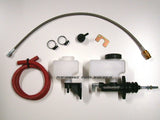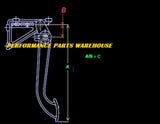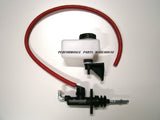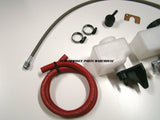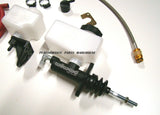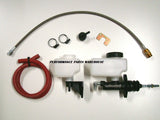How to Calculate Proper Pedal Ratio
Pedal ratio is the ratio of leverage your clutch pedal applies to the master cylinder. To determine the pedal ratio you need to measure the height of the pedal to the pivot point then divided the measurement of the pivot point to the lower arm that controls your rod to the master cylinder.
|
A = height of pedal |
If you apply 100 pounds of pressure to the clutch pedal, 100 pounds X (6 to 1) = 600 pounds of pressure. So, if the clutch pedal has been modified from its' original design the pedal ratio is effected drastically. You can now see the pedal ratio is a "multiplier" of the pressure you apply with your foot, because this is the leverage that is applied to the master cylinder.
Now, take this same formula and substitute 2" instead of 1.5" you end up with a 4.5 to 1 ratio. Multiply 4.5 times the 100 pounds of applied pressure and you get 450 pounds instead of 600 pound. That half inch cost you 25 percent of your clutching power. The same thing applies when you shorten the upper measurement.







